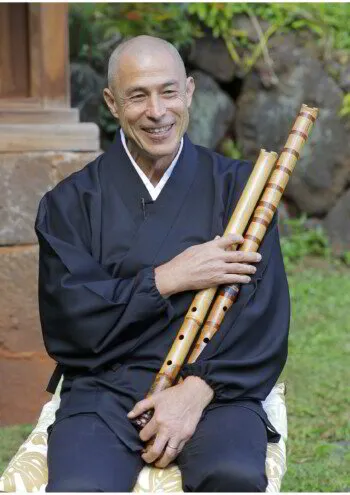There are many differences between ji-nashi flutes and flutes made with ji. But then, there is also an infinite number of differences between all of the flutes that are made with ji. In other words, it’s hard to generalise. Many people (including me) think that excellent ji-nashi flutes are very desirable. But this might be a personal preference thing, rather than something based upon concrete and consistent observations.
Among the subjective words I might use to describe the sounds that an exceptional ji nashi flute might make, are ‘mellow’, ‘rich’, ‘traditional’, ‘complex’, ‘rough’, etc.. None of these words really describe the actual physical sound, but we all know what they mean, at least to ourselves!
Perhaps, if you can’t tell the difference by yourself when playing on the two types of flutes or listening to them being played, then there is no point really in listening to someone else’s opinion on the subject. Generalising about pitch or intonation might also be counterproductive. The quality of intonation varies between all flutes, whether they have ji in them or not.
One might observe floating around more ji-nashi flutes w/bad intonation or dud notes, than flutes w/filler. This doesn’t mean that therefore ji-nashi flutes, by definition, have worse intonation than flutes with ji. It’s just that it is easier to make a bamboo flute w/out ji than w/ji (so lots of ji-nashi flutes), but it’s easier to make a flute with good intonation and no dud notes using ji (so lots of ji-nashi flutes with bad intonation and dud notes).
By the way, one should never, ever think that by playing ji-nashi shakuhachi, one doesn’t need to sound musical. There is only one excuse, or rather reason, for that — not enough practice.
I am blessed with a number of ji-nashi or nearly ji-nashi flutes with good intonation and a minimal of questionable notes. I’ve seen many more ji nashi flutes in others’ possession that play much better than my own. Maybe I’m not so blessed after all…
Here’s what I like about ji-nashi, or nearly ji-nashi shakuhachi. They can be very difficult to control, in other words, they are even more challenging than shakuhachi made with ji. Why would anyone want that!?! [Maybe because shakuhachi players are ‘special’ people. In German, I think the word would be ‘komisch‘.] :-)
Ji-nashi flutes make various sounds, noises, weird harmonics or no sound when I do lose control. I try my utmost and spend a great deal of time and effort trying to learn how to control these flutes, and avoid the various sounds, noises, etc. And yet…
And yet, it is that extra effort of trying to stay in control, that ever-present risk of losing control and the unexpected, unintended addition to the ‘music’ of the various sounds, noises (or even the ‘no sound’) when I inevitably lose control, that I enjoy most about these flutes.
In other words, when playing these flutes, I try my best to eliminate the very things I like most about playing the flutes. How weird (komisch) is that!?!
In any case, I never have to worry about succeeding in eliminating those unintended elements, because I never will.

